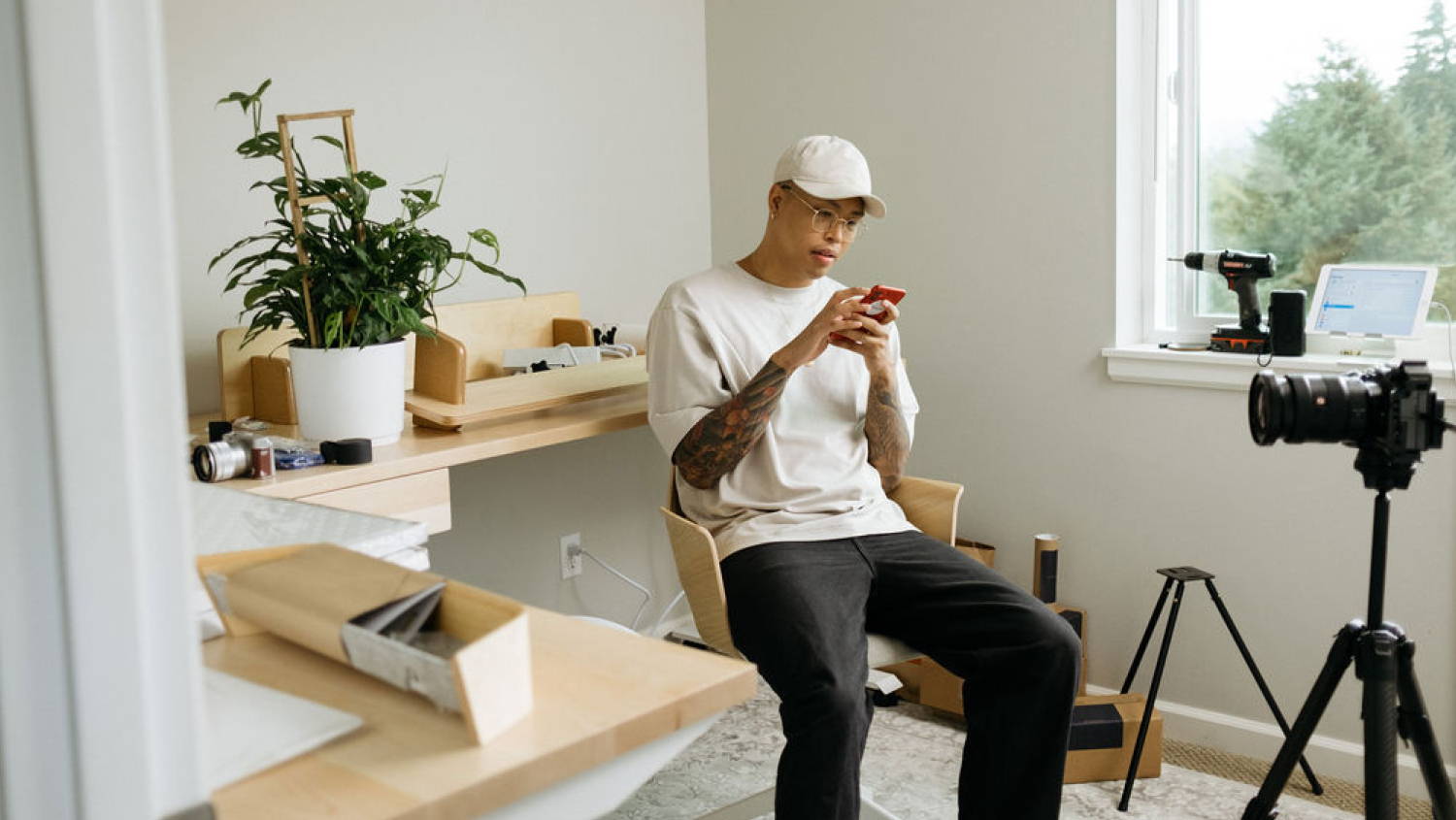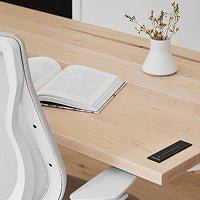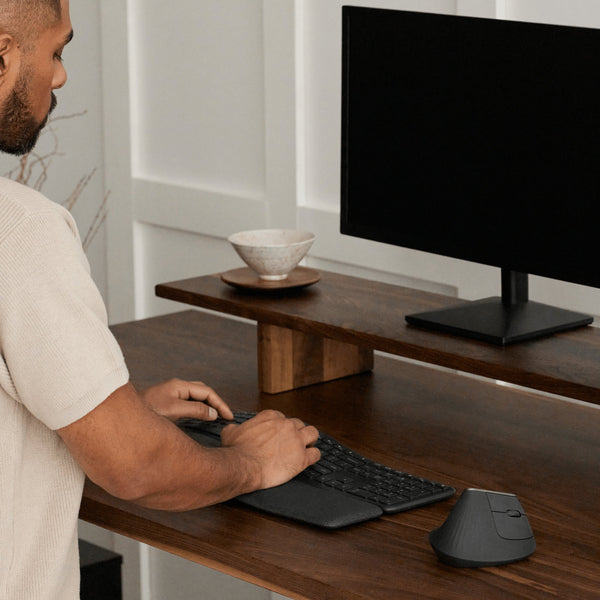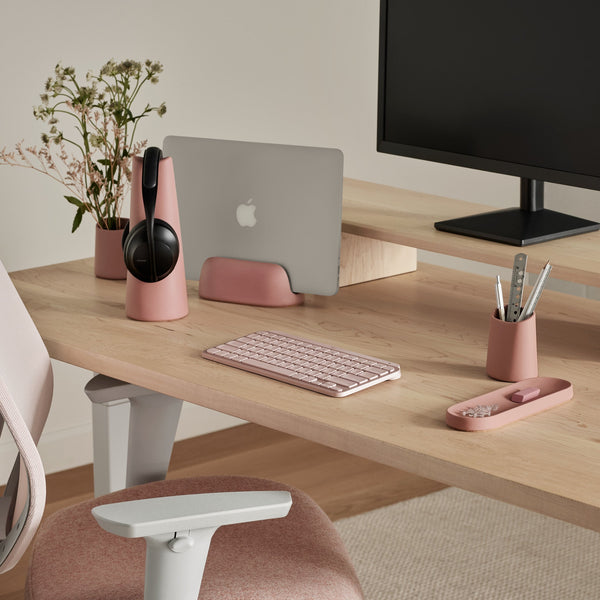No Space, No Problem
As remote work continues to gain popularity, creating an optimal home office is essential, even in a small space. We know that working within the confines of a compact area presents its own set of challenges. However, with careful planning and thoughtful design choices, you can transform even the tiniest nook into a highly functional and inspiring workspace. In this article, we will delve into the art of crafting a remarkable home office setup regardless of limited square footage, while offering practical tips to enhance your productivity and well-being at work.
Choosing the Right Standing Desk for a Small Space
When it comes to choosing the right desk setup for your small home office, it's important to start by assessing the available space and understanding the dimensions that would work best. By doing so, you can make an informed decision and ensure that your desk not only fits comfortably but also optimizes the limited area. Consider compact desk options that are specifically designed to accommodate small spaces. For instance, a desk with a width of 40-48 inches and a depth of 20-24 inches is often ideal for small home offices as this size range provides ample workspace while maintaining a compact footprint.
Here are our best desk recommendations for compact office spaces:
1. Standing Desks
Standing desks, such as our Sway Standing Desk or our Shift Standing Desk, offer benefits beyond improved ergonomics; they are also highly advantageous for small office spaces. Available in the compact size of 24 inches by 48 inches, our standing desks are perfect to maximize your workspace.
Indeed, a standing desk eliminates the need for multiple work surfaces.The ability to raise the desk height allows you to comfortably stand and work on tasks that require more movement and engagement, such as giving presentations. Conversely, lowering the desk to a sitting position is beneficial for focused tasks like data analysis or writing reports.
A standing desk can also help save space. When the desk is adjusted to its maximum height, there is ample clearance underneath the tabletop, creating an opportunity to utilize the space more efficiently. Placing your office chair underneath the raised standing desk, for example, allows you to store it conveniently when not in use. We also suggest adding casters to your standing desk for increased space optimization. By rolling the desk into a corner or against a wall when not in use, you can create additional floor space.
2. Wall-Mounted Desks: Maximizing Floor Space
Wall-mounted desks are an excellent choice for small spaces as they can be easily mounted on the wall, freeing up valuable floor space. These desks provide a sturdy and functional work surface while keeping the area open and uncluttered. By utilizing vertical space, wall-mounted desks allow you to work comfortably without sacrificing floor space. They come in various sizes and styles, allowing you to find the perfect fit for your specific needs and aesthetic preferences.
3. Corner Desks: Making the Most of Underutilized Space
Often, the corners of a room remain underutilized – corner desks offer a smart solution to this problem. These desks fit snugly into corners, maximizing the available area and making efficient use of the otherwise neglected space. With their unique design, corner desks provide ample workspace for your tasks while optimizing the overall layout of your small home office. They come in a variety of designs and configurations, ranging from L-shaped desks to triangular desks, allowing you to choose the perfect option that suits your needs and complements your overall aesthetic.
When choosing the right desk for your small space, remember to prioritize your comfort and well-being while considering the dimensions, adjustability, and design of the desk. With careful planning and thoughtful choices, you can transform your small home office into a productive and inviting workspace that supports your work needs.
Optimising Your Small Home Office
1. Storage Solutions
Think about incorporating storage solutions into your desk setup to help declutter your small workspace. Desks drawers, filing cabinets and bookshelves are notable options to keeping your work essentials organized and within reach.
2. Shelving and Organizers
Install floating shelves or wall-mounted file organizers to store documents, books, and supplies. Consider using a pegboard or corkboard for easy access to frequently used items like notes, reminders, and stationery.
3. Cable Management Solutions
Tangled cables can make a workspace appear messy and can be hazardous. Invest in a cable management solution to keep your cables organized and out of the way. Cable clips, cable sleeves, or adhesive cord holders can also help maintain a clean and clutter-free workspace.
4. Lighting
Proper lighting is crucial for a comfortable and productive home office. If natural light is limited, supplement it with desk or floor lamps. Consider LED lights with adjustable brightness levels to create a well lit and inviting workspace.
Conclusion
Designing a small home office with the right desk is a rewarding endeavour that can significantly enhance your work experience. By carefully selecting the right desk, optimizing your workspace layout, and incorporating ergonomic principles, you can create a productive and healthy environment in even the tightest of spaces. Remember, a well-designed home office can have a positive impact on your productivity, focus, and overall well-being.
As you embark on your journey to create an efficient home office in a small space, we encourage you to explore our range of high-quality ergonomic furniture, including standing desks and ergonomic chairs which fit perfectly into small spaces. Don't let limited space limit your potential. With the right tools and a well-thought-out design, you can transform any corner of your home into a thriving workspace.






Leave a comment